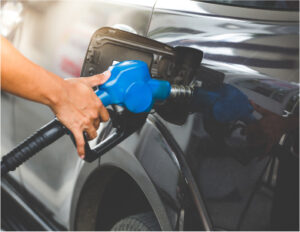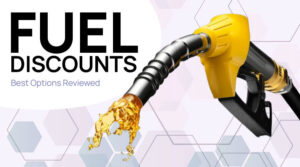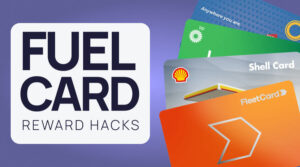Fuel can eat up a big chunk of your construction budget. From centralising fuel buys to using card controls, here’s how to keep costs predictable and avoid blowouts. We cover expert tips plus how FleetCard, Shell Card and other options can help you stay on top of spend.
Why Fuel Costs Blow Out on Big Construction Jobs
On a major build, fuel costs can get out of hand fast. The main culprits are:
- Paying different prices at different sites
- No clear picture of who’s using fuel and when
- Engines idling for hours
If you’re only checking the total at the end of the month, you’re missing chances to step in early and fix problems.
How to Better Manage Fuel Spend with a Fuel Card
1. Centralise where you buy fuel with the right fuel card
Letting each driver or operator fuel up anywhere is a quick way to lose control of spend. A centralised fuel card system fixes this by giving you:
- Locked-in network pricing
- One invoice for all fuel (with GST clearly shown)
- Reporting that shows trends and spikes
FleetCard gives you access to 6200+ locations across Australia, with ongoing discounts like 3c per litre at Shell and 1c at Ampol or 7-Eleven. Shell Card focuses on Shell’s 1500+ locations, with up to 4c off premium fuels and the Shell Card GO app so drivers can pay from the cab.
2. Make the most of promo offers
When you’ve got a big fleet to fuel, those first few months matter.
- FleetCard’s current deal is 6c off at Shell and 3c off at Ampol/7-Eleven for six months, plus a reduced $2.99 monthly fee.
- Shell Card’s promo gives you 7c off all fuels for six months, with no monthly fee.
If you’re running multiple refuels a day, those cents stack up fast.
3. Set spending rules for every card
Modern fuel cards let you control what each card can be used for. You can set limits on:
- Fuel type (so diesel-only trucks don’t get filled with premium petrol)
- Time of day purchases can be made
- Maximum spend per day or per transaction
FleetCard and Shell both let you set custom spend limits, merchant controls, block shop purchases if you want to keep things fuel-only, and real time alerts.
4. Check data weekly, not monthly
Waiting until the end of the month to spot a fuel spike is too late. Log in weekly to:
- See which vehicles are guzzling more than usual
- Check that fuel types match vehicle needs
- Pick up on any odd patterns in usage
Shell Card GO and FleetCard dashboards update fast enough to flag issues before they cost you thousands.
5. Cut idle time
Idling burns fuel without getting work done. A few minutes here and there adds up over the course of a project. Train drivers to shut off engines when they’re waiting, and look at job scheduling to reduce bottlenecks.
6. Pick stations close to site
Travelling 20 minutes each way to refuel is wasted time and wages. Map your sites against your card’s station network. FleetCard’s multi-brand coverage makes it easy to find a nearby option, while Shell Card works best if you’re already close to a Shell site.
7. Plan for fuel price swings
Prices change daily. You can’t stop that, but you can make sure you’re always getting the best available rate. Locking in discounts through a card gives you a buffer when prices jump.
8. Put fuel use in contracts
If contractors are driving your vehicles or using your cards, write the rules into their agreements. Make it clear how fuel is tracked, who approves usage, and when cards need to be returned.
FleetCard vs Shell Card at a Glance (2025)
| Feature | FleetCard | Shell Card |
| Sites | 6200+ multi-brand | 1500 Shell sites |
| Ongoing discount | 3c at Shell, 1c at Ampol/7-Eleven | Up to 4c premium |
| Promo | 6c Shell, 3c Ampol/7-Eleven (6 months) | 7c all fuels (6 months) |
| Monthly fee | $5.99 (promo $2.99) | $2.50 (promo $0) |
| Purchase controls | Yes | Yes |
| App | Yes | Yes |
The Takeaway
Fuel management doesn’t just rely on chasing the lowest bowser price every time. It’s setting up systems so you know what’s being spent, where, and why. If you centralise buying, use card controls, watch the data, and take advantage of offers, you can keep fuel costs predictable and avoid budget shocks mid-project.
Find the Right Fuel Card For Your Next Project
Compare FleetCard, Shell Card, and other top options to see which fits your sites, vehicles, and budget best.

Check Your Fuel Card Eligibility
FAQs
How much could I save with a fuel card?
Your savings depend on how many litres you use, where you refuel, and the card’s discount rate. For example, if your project uses 50,000 litres over six months and your card gives you a 6c per litre discount, that’s $3,000 saved. Larger fleets or projects running for 12–18 months can see much bigger savings, especially if they take advantage of promotional rates before moving to ongoing discounts. It’s worth running the numbers based on your own fleet size, average fuel price, and how far your team travels to refuel.
Which is better for construction fleets – a multi-brand or single-brand card?
It comes down to your site locations and how often they change. Multi-brand cards like FleetCard give you access to thousands of stations across multiple brands, which is ideal if you’re moving between sites or working in remote areas. Single-brand cards like Shell Card can be great if you’re always near that brand’s stations, as they sometimes offer higher brand-specific discounts, app-based payment, or rewards programs. Some businesses even run both to cover all scenarios.
Can I stop drivers buying food or drinks on a fuel card?
Yes, most modern fuel cards let you control what each card can be used for. With FleetCard and Shell Card, you can block non-fuel purchases entirely or set rules for certain categories, like car wash or oil. You can also monitor every transaction online, so if you allow in-store buys for essentials, you’ll still see exactly what was purchased and when. This helps you keep spend focused on project needs while avoiding small extras adding up over time.
What happens after the promo ends?
When the promotional period finishes, your discount will revert to the ongoing rate, and your monthly card fee may increase to the standard amount. For example, FleetCard’s promo rate of 6c per litre at Shell drops to the ongoing 3c per litre after six months. If your fleet relies on high-volume discounts, it’s worth re-checking your deal at the end of the promo to make sure it’s still the best fit. Some businesses renegotiate at this point or switch providers to take advantage of new offers.
Do these cards link to accounting software?
Yes. Both FleetCard and Shell Card integrate with accounting platforms like Xero and MYOB, which means your fuel spend can be automatically imported and categorised. This saves hours at month-end and reduces the risk of errors from manual data entry. You’ll also get GST itemisation on invoices, making tax reporting much simpler. If you have a finance team, these integrations can streamline reconciliation and cash flow tracking for the entire project.


